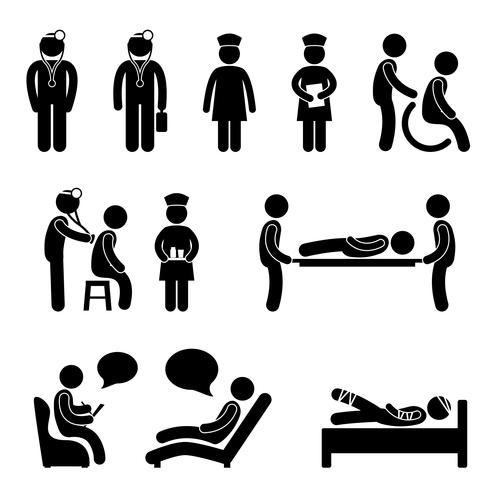Are There Medications For Addiction Treatment
Are There Medications For Addiction Treatment
Blog Article
How Do Mood Stabilizers Work?
State of mind stabilizers help to calm locations of the brain that are influenced by bipolar illness. These medicines are most effective when they are taken regularly.
It may take a while to locate the ideal medicine that works ideal for you and your medical professional will monitor your problem throughout treatment. This will involve normal blood tests and possibly an adjustment in your prescription.
Natural chemical policy
Neurotransmitters are a group of chemicals that manage each other in healthy individuals. When degrees come to be unbalanced, this can cause state of mind disorders like clinical depression, anxiety and mania. Mood stabilizers aid to stop these episodes by helping control the equilibrium of these chemicals in the mind. They also might be made use of alongside antidepressants to improve their performance.
Drugs that work as mood stabilizers consist of lithium, anticonvulsants and antipsychotics. Lithium is probably the most well known of these medications and works by impacting the circulation of salt through nerve and muscle cells. It is usually utilized to deal with bipolar illness, yet it can additionally be useful in treating other mood problems. Anticonvulsants such as valproate, lamotrigine and carbamazepine are additionally effective mood supporting medicines.
It can take a while to locate the appropriate sort of drug and dose for each person. It is very important to collaborate with your medical professional and engage in an open dialogue regarding exactly how the medicine is benefiting you. This can be specifically handy if you're experiencing any side effects.
Ion channel inflection
Ion channels are a major target of mood stabilizers and several other medicines. It is currently well developed that they are vibrant entities that can be regulated by a selection of exterior stimulations. Additionally, the modulation of these networks can have a variety of temporal results. At one extreme, changes in gating dynamics may be fast and instant, as in the nicotinic acetylcholine receptor/channel system. At the various other end of the spectrum, covalent modification by protein phosphorylation might cause adjustments in network feature that last longer.
The field of ion channel inflection is getting in a duration of maturation. Current research studies have shown that transcranial concentrated ultrasound (United States) can promote neurons by activating mechanosensitive potassium and sodium channels installed within the cell membrane layer. This was demonstrated by expressed channels from the two-pore domain name potassium family members in Xenopus oocytes, and concentrated United States substantially modulated the current flowing via these channels at a holding voltage of -70 mV (ideal panel, family member effect). The outcomes follow previous monitorings showing that antidepressants impacting Kv networks manage glia-neuron communications to opposite depressive-like behaviors.
Neuroprotection
State of mind stabilizers, like lithium, valproic acid (VPA), and carbamazepine, are crucial in the therapy of bipolar affective disorder, which is characterized by recurrent episodes of mania and top-rated mental health services for adults clinical depression. These medications have neuroprotective and anti-apoptotic residential properties that assist to prevent cellular damage, and they also boost mobile durability and plasticity in inefficient synapses and neural circuitry.
These safety activities of mood stabilizers may be moderated by their restraint of GSK-3, inositol signaling, and HDAC activity. Furthermore, lasting lithium treatment protects versus glutamate excitotoxicity in cultured neurons-- a version for neurodegenerative conditions.
Studies of the molecular and mobile results of mood stabilizers have actually revealed that these medicines have a wide variety of intracellular targets, consisting of several kinases and receptors, in addition to epigenetic modifications. Refresher course is needed to determine if state of mind stabilizers have neurotrophic/neuroprotective actions that are cell type or wiring particular, and just how these impacts may match the rapid-acting therapeutic feedback of these agents. This will certainly help to establish brand-new, quicker acting, more efficient therapies for psychiatric ailments.
Intracellular signaling
Cell signaling is the process through which cells interact with their environment and various other cells. It involves a sequence of action in which ligands communicate with membrane-associated receptors and bring about activation of intracellular pathways that control essential downstream mobile functions.
State of mind stabilizers act on intracellular signaling with the activation of serine-threonine healthy protein kinases, resulting in the phosphorylation of substratum healthy proteins. This activates signaling waterfalls, leading to modifications in genetics expression and mobile function.
Lots of state of mind stabilizers (including lithium, valproate and lamotrigine) target intracellular signaling pathways by hindering particular phosphatases or triggering details kinases. These effects trigger a decline in the activity of these pathways, which causes a decrease in the synthesis of certain chemicals that can impact the mind and lead to signs of clinical depression or mania.
Some state of mind stabilizers also work by boosting the activity of the inhibitory natural chemical gamma-aminobutryic acid (GABA). This boosts the GABAergic transmission in the mind and reduces neural activity, consequently generating a relaxing effect.